I test drove the Hyundai Ioniq 5 — and it's the perfect EV for curing range anxiety
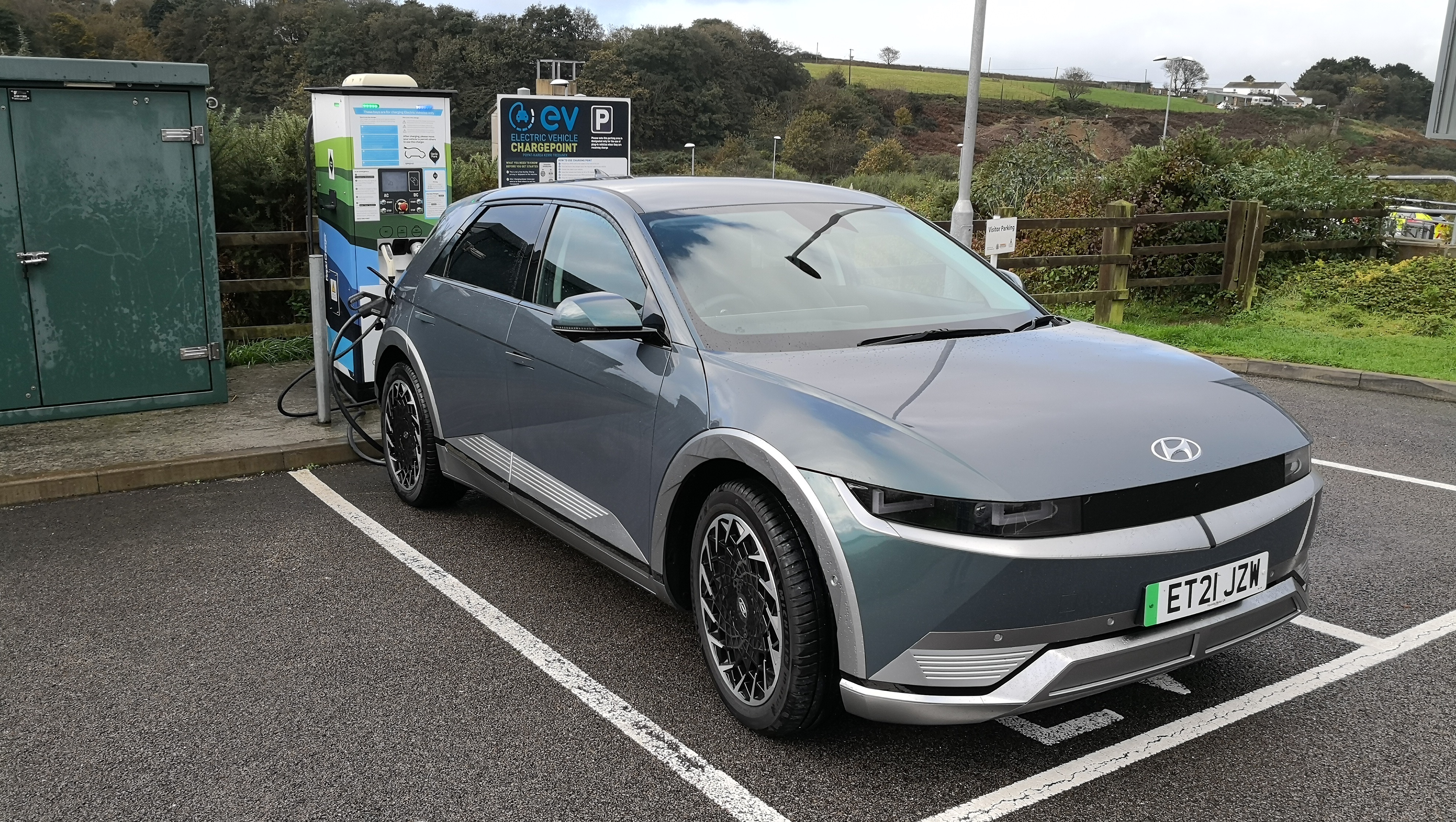
Cornwall is a long way from anywhere. As someone who comes from the pointy bit of the U.K., I should know. If you’re driving an EV to and from the most south-westerly county of the mainland it’s therefore a very good idea to plan ahead. You’ll need drinks, snacks and, most importantly, a clear plan of where to stop to charge up.
A decent EV is useful too, and the rather excellent Hyundai Ioniq 5 is perfect for the job. It’s not quite a match for the 353-mile Long Range Tesla Model 3, which Tom's Guide Automotive Editor Tom Pritchard drove on the same route recently, but it’s not far off.
- The best electric cars you can buy right now
- How long does it take to charge an electric car?
- Plus: Hyundai IONIQ 6: Here's your first look
In fact the model that I’ve just driven to the 400-or so mile round trip to Cornwall and back comes packing a 238-mile range. Of course, you will still have to stop on the way, but there are obvious reasons why you'd want to take a break.
Nevertheless, planning is an essential requirement if you’re going on any kind of journey in an EV, and not just in the U.K. It’s all about the infrastructure, which may be getting better all the time, but still has a long way to go before EV charging is as slick and straightforward as filling up your car with gas.
Electric vehicles are great around town and for shorter journeys, but there aren't many that are truly great at handling trips in the 200 to 300-plus mile range. Having a fast and efficient charging network will become an essential part of car ownership in the future. But right now you can see the appeal of Tesla ownership, thanks to its dedicated, and fast, network of superchargers.
But how’s it working out for us non-Tesla types if you’ve got to pop to Land’s End on a whim? It’s a mixed bag to be honest and you need to be a little bit savvy to get the best from a long-distance EV experience. Knowing when, where and why you should charge seems bewildering at first, but the more you drive the better you get.

Hyundai Ioniq 5 is a very nice car
Our model, a top-of-the-range IONIQ 5 Ultimate 73KWH RWD +Eco Pack and Tech Pack model arrived fully loaded, and with an 80% charge.
Get instant access to breaking news, the hottest reviews, great deals and helpful tips.
Prudently, I spent a while at a deserted Instavolt charging point close to home the night before I left for Land’s End to top up that battery as much as I could, knowing this would save time the next day.
We set off next morning just before lunch, with the Hyundai Ioniq 5 primed for the journey. You couldn't ask for a better car for the task, as it’s super comfortable and came with all of the trimmings associated with a top-of-the-range model.
Full marks to Hyundai for the seats, which were heated front and back, while the front ones could be adjusted electrically for optimum comfort. There was even an electrically adjustable lumbar support.
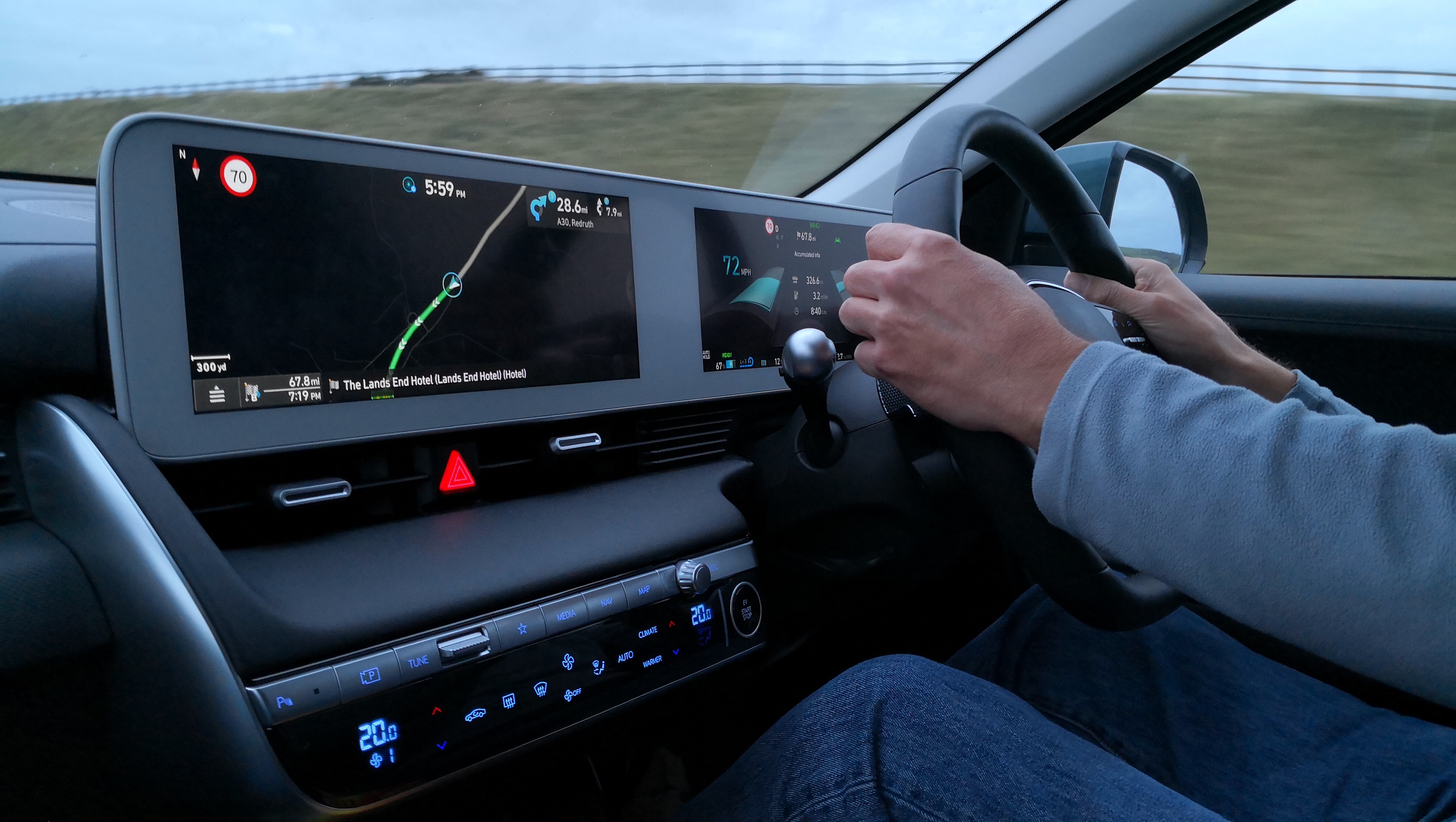
The sliding center console is a neat touch too, allowing you to move it backwards and forwards to suit your own personal storage requirements.
Our model had a killer Bose Premium Audio system fitted complete with 7 speakers and a subwoofer — which was pretty beefy. There was also wireless phone charging and a raft of options available via the 12.3-inch touchscreen, which doubled as the GPS and our media center for entirety of the journey.
Hyundai also makes all of the connectivity features a cinch to use, as Android Auto and Apple CarPlay are both included. Bluetooth and voice recognition rounds out just some of the tech we tried and it all, thankfully, worked as expected.
I found the GPS navigation particularly impressive, which dynamically adapted to traffic conditions, and proved to be invaluable for getting through the worst of the weekend road chaos.
But back to the charging side of things. Our Ioniq 5 was going just fine until we got into Devon when thoughts started drifting towards a top up. It still claimed to have 150 or so miles of range left, but I never like to let an EV get down too low. That caution is based on personal experience, since you could easily arrive at your chosen charge point to find it out of order, busy or, occasionally not even there at all.
Sometimes it can be a combination of factors that make charging a pain, so a bit like bathroom breaks on a long road trip, I think it’s best to go whenever you can.
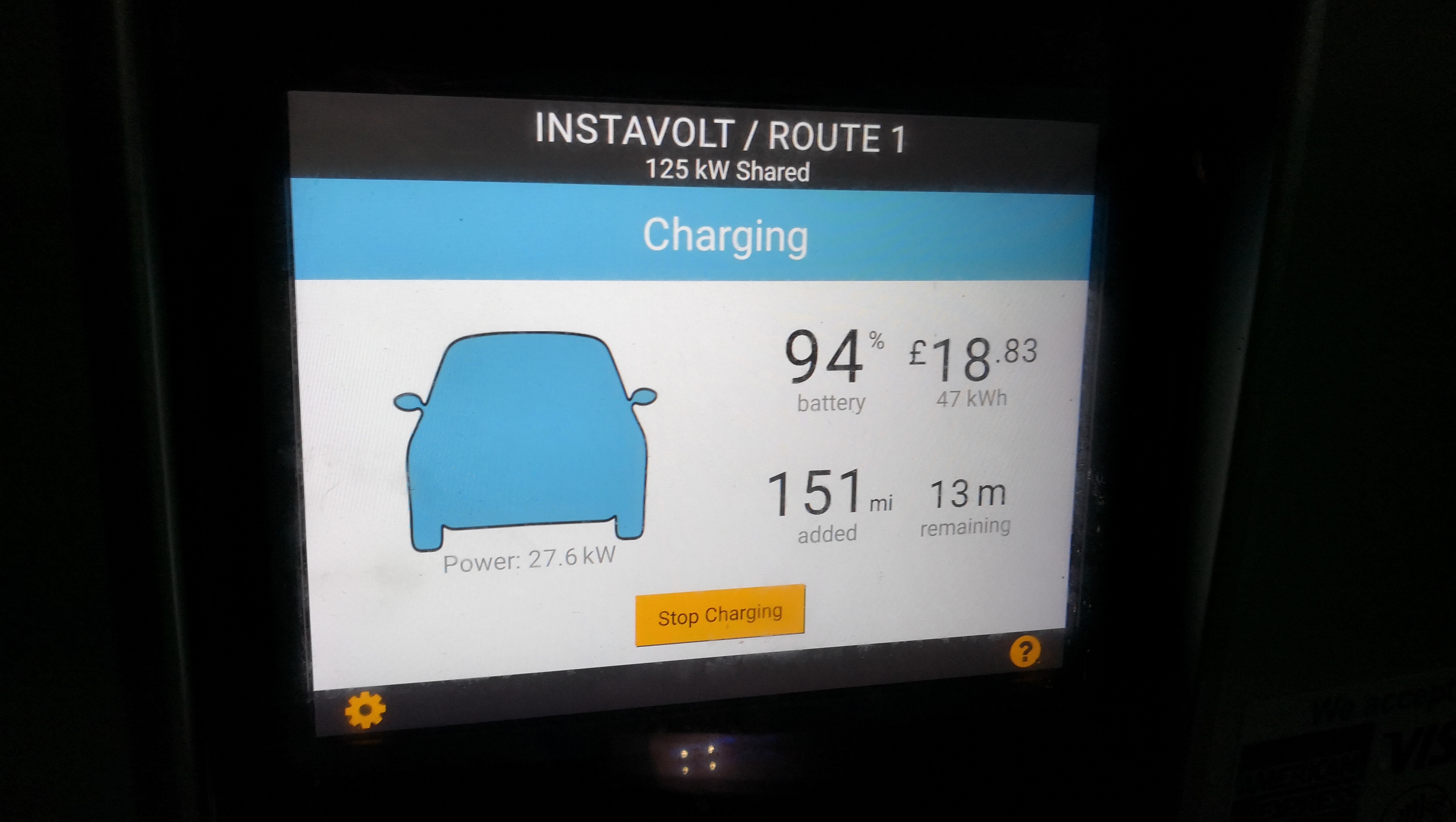
Charging infrastructure is good, but it can be better
Hyundai offers the Ioniq 5 with a year's subscription to Ionity, one of the big U.K. charging networks. I should also note to my American readers that the car offers two years free charging with Electrify America in your neck of the woods. In both cases, that's all handled by the 'Charge myHyundai' app.
However, wanting to explore the colorful selection of charging points along my route I took a slightly different tack.
First port of call was Heron Farm, just off the A30 near Honiton. You definitely need your GPS to find it the first time, but this rural location is worth seeking out. The farm boasts a café, vineyard and was once featured on TV’s Grand Designs.
Better yet, it’s got a brace of Instavolt chargers, which is my go-to brand for pay-as-you-go convenience and hassle-free appeal. Tap your card, plug in and charge, all while you head off for an overpriced coffee and a rustic flapjack. Unfortunately both chargers were in high demand, with two Jaguars occupying them on our arrival. Worse still, in the few minutes it took to get a drink, a VW ID.4 and Renault Zoe had already taken their place.
Having just spent £12 on hot drinks and a Halloween witch gingerbread, and hating the need to queue, I decided to drive 10 miles towards the M5 and try another Instavolt outside a nearby leisure centre. It was kind of on the way towards Exeter anyhow.
The GPS took us cross country and down a single track lane that had me wondering if I would end up in someone’s farmyard, but we came out at the other end right on the doorstep of the Culm Valley Sports Centre. Better still another two Instavolt chargers were right there, and both were unoccupied.

Charging the Ioniq 5 really easy. You can open the charger door, located by the rear taillight, using the key fob or by pushing a button on the door itself. Plug in the charger and a small array of LEDs light up depending on how full (or empty) the battery is.
Hyundai has also done a neat job with the charging bit of the equation as the system supports charging up to 800V, allowing swift top-ups that take around 18 minutes to go from 10 to 80 percent charge. That means it's quick and easy to have a 10-minute break and still get quite a few miles back on the range anxiety-beating clock.
However, knowing the route well, I was still planning to have another top-up further down, despite the fact that Zap Map (a mapping app that lists the majority of EV chargers) indicated Land’s End now has a shiny new high-speed charger.
So, a little while later, we stopped again near Camborne in Cornwall. GeniePoint charging stations are quite commonplace in Cornwall, but this unit was woefully slow, offering just 9kW to me. That would take a few hours to offer any meaningful charge, so it was basically useless. Expensive too, with an additional £1 connection charge if you're not a registered user.
We arrived at Land’s End late in the day. This was particularly useful because the parking attendant had left and meant we didn't have to pay to get in. Even better was the fact that there was a new Gridserve charger waiting for us, which was both vacant and in good working order.
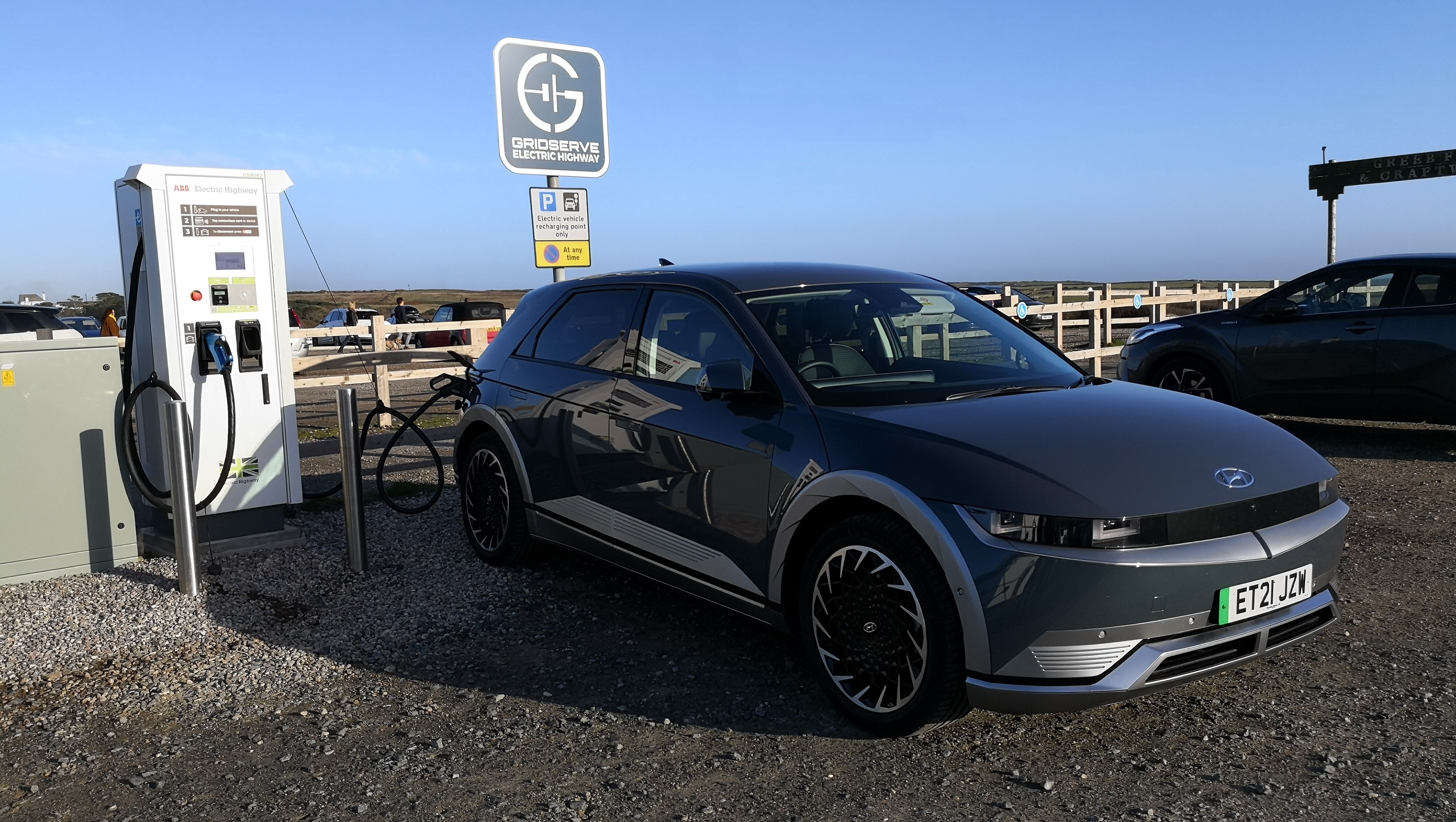
Gridserve gives you the option of plugging in, tapping your payment card and enjoying fast charging without an app or any additional hassle. We left the Hyundai to get back up to 100 percent (well, actually 97 percent) and went for more coffee and cake to prepare for the return journey.
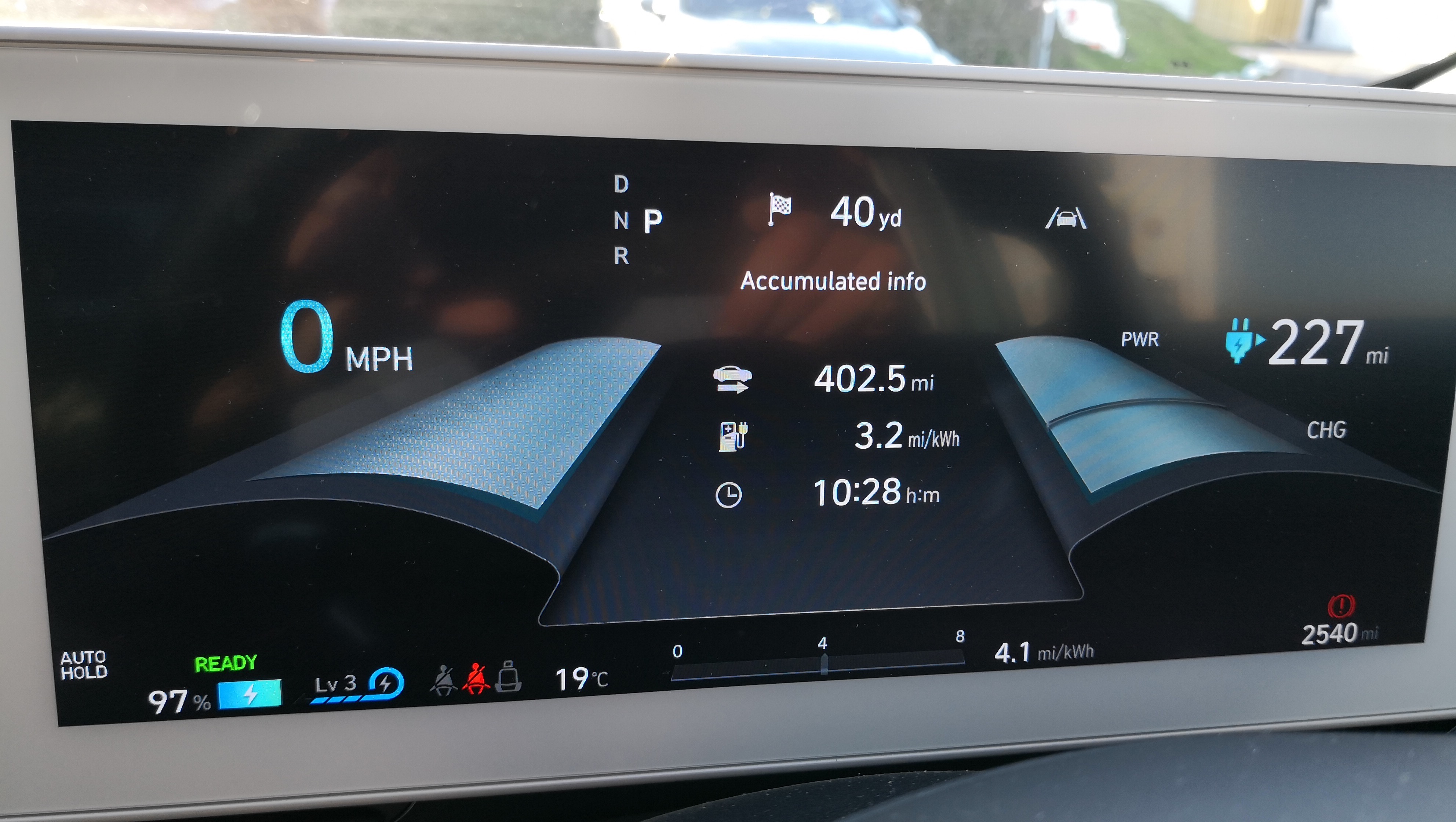
You don't need Tesla-level range to beat range anxiety
Having done this trip before in various EVs it’s interesting to note just how unpredictable these journeys can be. I’ve had all sorts of stressful moments on long EV trips like this, and have quickly formed an opinion on many of the charging networks I’ve encountered along the way.
I’ve yet to experience anything bad with Instavolt (knock on wood), so it's my charging point of choice where available. Sadly other networks are either inconsistent, or clunky to use. So you inevitably end up with multiple apps and accounts with the ones that insist you register before you're allowed any power.
The Hyundai Ioniq 5 was a joy, though, despite the fact that it doesn't cover the same level of distance as a Long Range Tesla. No matter, as you’ve invariably got to stop for the toilet en route, and having a break is always a good idea on long road trips. So what’s the hassle?
It still comes down to the fact recharging an EV isn’t quite the speedy experience that topping up a tank of gas is, but fortunately the Hyundai was quick enough to not be a pain. You do end up spending more on miscellaneous extras with an EV though, with the additional snacks and drinks potentially taking their toll on your waistline too. So there are trade-offs.
Having all the toys on-board helped out a lot with our Land’s End odyssey, but the car is pricey, especially as our Ioniq 5 had the Eco and Tech Packs. The Eco Pack is comprised of a battery heating system and heat pump, costing £1,195 more. Meanwhile the £1,495 Tech Pack adds in front memory seats, relaxation premium seats, BVM (Blind View Monitor), PCA (Parking Collision Avoidance Assist - Reverse), RSPA (Remote Smart Parking Assist) and SVM (Surround View Monitor). Oh, and opting for the all-wheel-drive variant of this model means you’re looking at a cool £48,145.
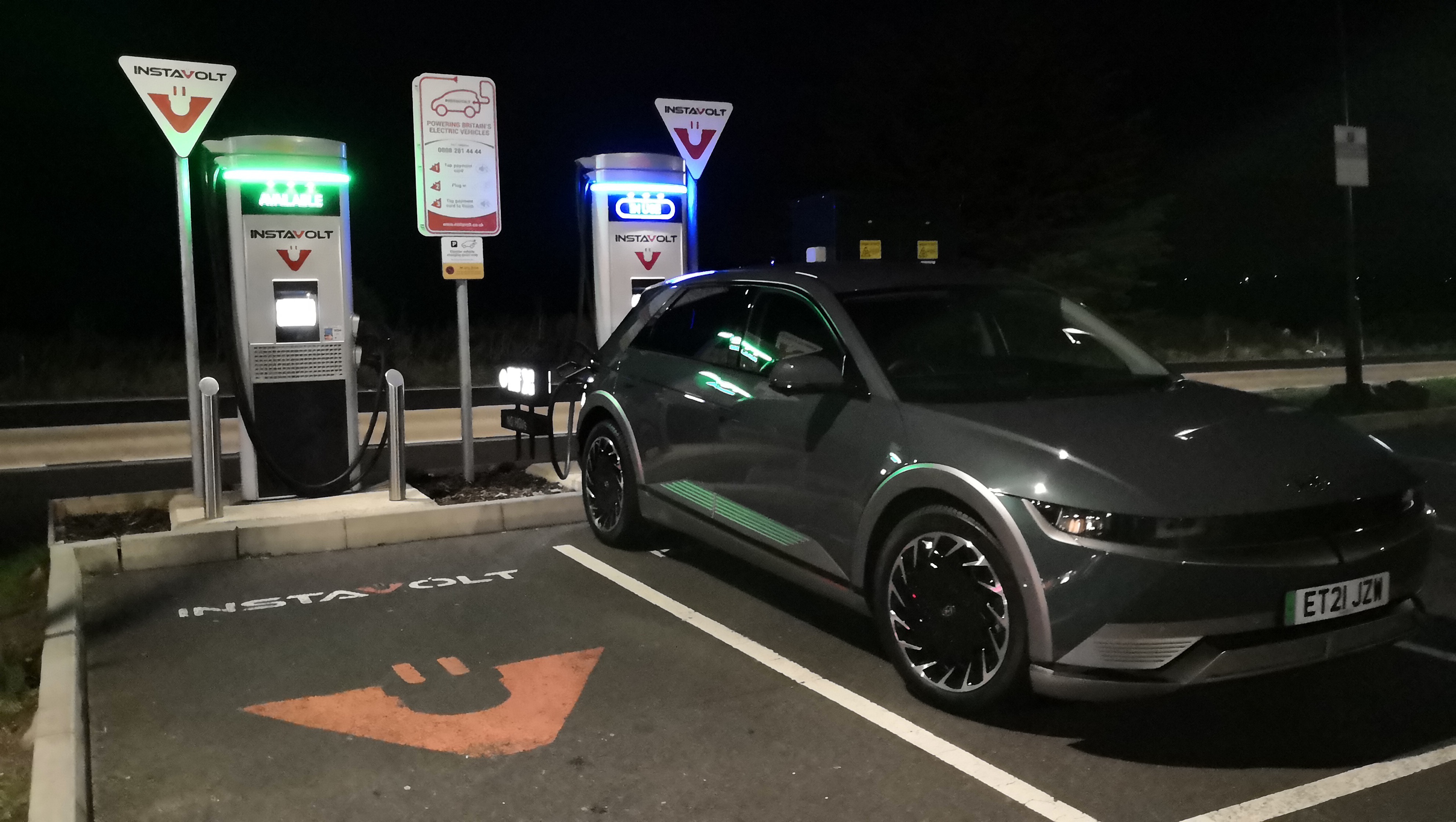
In its most basic model variant, the Hyundai Ioniq 5 SE Connect 58 kWh RWD costs £36,995 (nearly $51,000), but a similarly specced model to the car I drove could cost a smidgen over $66,000 in the U.S. Sadly Hyundai hasn't revealed any details on how much the car will cost in the U.S. — despite the fact it's scheduled to arrive before the end of the year.
Tesla’s Model 3 starts out at $43,990, but ends up at $52,490 if you’re after a the Long Range model (plus extras) we reviewed. Either way, EV motoring isn’t that cheap because buying the car is one thing, but all those snacks, drinks and endless shopping excursions to kill time are where the additional costs really add up.
However, as faster charging comes our way perhaps we’ll soon be able to top up our battery electric vehicles in the same time it takes to fill up with gas. I, for one, can’t wait for that to happen.
- More: Buying an electric car? What you need to know about public chargers
- Hyundai IONIQ 6 first drive: A killer EV that delivers range and comfort.

Rob is a London-based freelance tech journalist covering EVs and car tech for Tom's Guide. He has worked at Microsoft and written for numerous tech sites including TechRadar, Gizmodo, ShortList and Fit&Well. When he's not working, he can usually be found out and about on one of his numerous ebikes.
